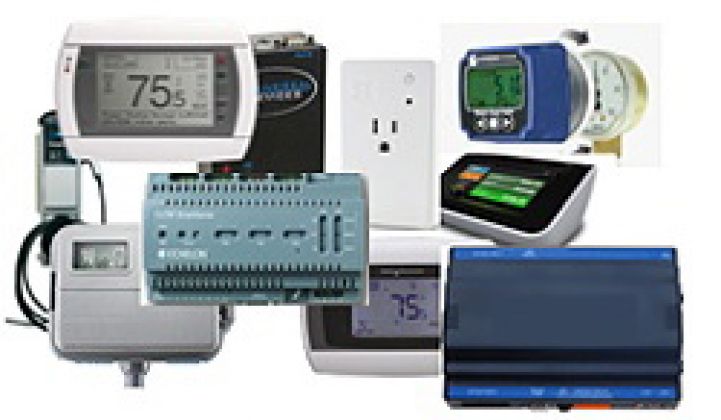The 2013 ARPA-E Energy Innovation Summit in Washington, D.C. this week is a showcase for cutting-edge energy technologies. That can include blue sky, yet-to-be-commercialized concepts in renewable energy, energy storage and materials science -- or it can include using big data innovations to make today’s in-home energy management technology work better.
That’s the idea behind a project announced this morning by ARPA-E-backed startup AutoGrid and Texas utility Austin Energy. The two are working on an interesting challenge: taking two-way-communicating smart thermostats from multiple vendors, and turning them into utility demand-response assets.
In simple terms, AutoGrid will apply its cloud-based Demand Response Optimization and Management System (DROMS), already in use by such partners as Silver Spring Networks and Oklahoma Gas & Electric, to connect about 100 smart-thermostat-connected homes in Austin Energy territory. That in itself isn’t groundbreaking -- lots of utilities connect to smart thermostat programs today to turn down peak power use to help manage grid needs.
But these existing programs tend to be utility-driven, using technologies from a single vendor. Austin Energy, on the other hand, wants to be able to achieve demand reduction via equipment from a variety of manufacturers, whether it’s bought and installed by homeowners themselves, HVAC contractors or home automation services providers -- and that, Austin Energy engineer Scott Jarman said, is a lot more complicated.
That’s because each vendor has different technical capabilities, as well as different business models and drivers for getting their technology into people’s homes, he said. Homeowners may want a smartphone-connected Wi-Fi thermostat that allows them to check and change their home temperature settings from work, or from bed, he said. HVAC contractors, on the other hand, may want smart thermostats that can monitor equipment performance to reduce maintenance costs, while utilities primarily want smart thermostats to reliably reduce home power use on command, in order to manage peak power needs.
Getting all these multiple technologies and business models to work together is where ARPA-E comes into the picture. AutoGrid’s $3.5 million ARPA-E grant, part of the Green Electricity Network Integration (GENI) program, is aimed at finding ways to apply big data technologies to manage energy use in real time for grid needs. AutoGrid, which raised $9 million in venture capital late last year, tackles that challenge at several different levels.
At the core, the Palo Alto, Calif.-based startup’s Energy Data Platform, a cloud-based unstructured data analytics and management engine, takes in and analyzes data from a multitude of sources. At the application level, AutoGrid’s DROMS platform “can communicate with any device, any protocol, through multiple communications channels,” AutoGrid CEO Amit Narayan told me. In the case of Austin Energy, AutoGrid is working with the two smart thermostat platform vendors the utility has picked so far, EnergyHub and ecobee, to tie their platforms into AutoGrid’s master control system, so to speak.
Eventually, the two intend to expand that connectivity to electric vehicle chargers and the smart meters from Landis+Gyr that Austin Energy is deploying throughout its service territory, he said. Likewise, Austin Energy is looking at ways to use AutoGrid’s technology to better manage the 90,000 one-way load control thermostats from Comverge the utility has already given out to its customers since 2001, Jarman noted.
Big data analysis can also help out in figuring out just how to fine-tune Austin Energy’s approach to getting smart-thermostat-enabled customers on board with the utility’s needs for demand response and energy efficiency, he added. Part of the project involves crunching “data related to consumer behavior, the impact of pricing signals, and the effectiveness of different demand management strategies,” which Austin Energy and AutoGrid will be testing out.
For example, Jarman said, Austin Energy would like to keep its costs down, which makes connecting to thermostats that customers have already installed an attractive option. At the same time, it isn’t yet sure just what combination of rebates, incentives and pricing options will work best in getting the largest number of these smart-thermostat-enabled customers to sign up for the utility’s programs.
AutoGrid’s technology can tackle this challenge by predicting what different approaches will work best, as well as by crunching the data coming in from real-world programs to see how they match up with the predicted results. That’s critical for utilities that want to know just how many megawatts of real-time demand reduction they can expect from their various residential energy management programs, which can otherwise be quite hard to measure.
ARPA-E’s goal for the work it’s doing with AutoGrid is to achieve a pretty dramatic reduction in the overall cost of getting these residential and small business demand management programs up and running, Narayan said. In fact, it’s targeting a tenfold reduction in overall costs, which include everything from initial planning and deployment through the entire lifecycle of the technologies involved. It will take some time to prove out whether AutoGrid’s approach to the challenge can meet those goals -- but then, long-term research is what ARPA-E is all about.



